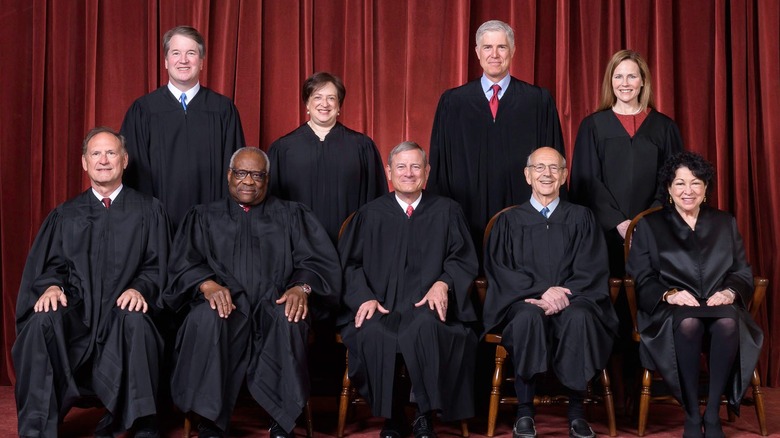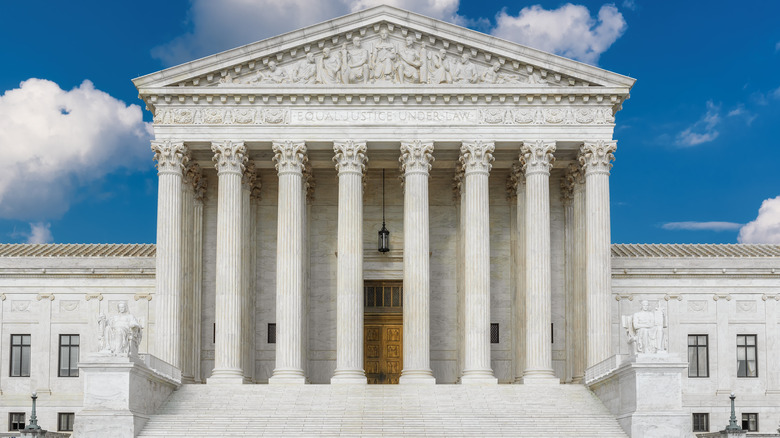Why Do The Supreme Court Justices Sit In The Order They Do?
The Supreme Court is part of the Judicial branch of government, and the highest authority when it comes to law in the United States. As such, its judges are expected to comport themselves with the utmost of dignity and solemnity, and tradition plays a major role in how the branch operates — particularly with regard to the Supreme Court.
All of this is to say that the Supreme Court is steeped in customs that have endured for centuries. So staid are the traditions that govern the Court that one legal historian, as the Supreme Court's website notes, called the body "the first court still sitting."
One of the traditions that governs the Supreme Court is how they sit, whether posing for photographs or behind the bench when hearing oral arguments. There's a specific order that must be followed, and the tradition goes back centuries.
Seniority is of the utmost importance
The way the justices of the Supreme Court sit, whether while posing for photos or hearing arguments, is based on seniority, according to the Supreme Court's website. The Chief Justice (in this case, John Roberts, pictured above), is seated in the center, regardless of how long he or she has served on the Court. The most senior Associate Justice sits to his left, the second-most senior justice to his right. From there, justices take their seats according to seniority, alternating left to right.
In a practical sense, that means that, for the current Court, Roberts is in the center, with Clarence Thomas to his right, and Stephen Breyer to his left, and so on. The most recently-appointed Associate Justices — Neil Gorsuch, Brett Kavanaugh, and Amy Coney Barrett — occupy the periphery of the bench.
Seating judges by seniority isn't limited to the Supreme Court, either. indeed, it's a practice carried out in some lower courts as well. For example, according to the West Virginia Judiciary website, justices on that state's Court of Appeals are also seated by seniority.
The Supreme Court abides by other ancient traditions as well
Besides sitting according to rank and seniority, other traditions inform how the justices of the Supreme Court act as well. For example, you will rarely, if ever, see a Supreme Court justice not wearing his or her black robes. According to the Supreme Court's website, for the first decade or so of the Court's existence, it wasn't uncommon for justices to add some color to their wardrobe. Since 1800, however, the tradition has been to wear black.
Another tradition, according to the American Bar Association Journal, is the use of quill pens. For the first century or so of the Court's existence, quill pens were the only pens available, the ballpoint pen having not been invented until 1888, according to BBC News. The first Chief Justice, John Jay, was keen to have his colleagues provided with pens and inkwells so they could take notes. These days, justices still have the pens in front of them, although it appears they're more of a prop than anything else. Further still, the Court hands them out as mementos to lawyers who argue before the judicial body, and indeed, some attorneys are known to keep collections of Supreme Court quill pens mementos from their arguments before the highest court in the land.


